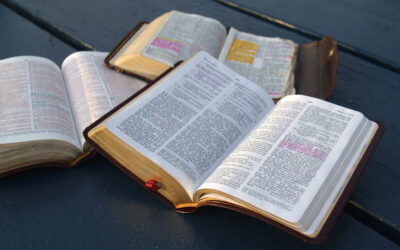Greek Orthodox is a branch of Eastern Orthodox Christianity. It is popular in countries that have ties to the Byzantine Empire and is also very influenced in Greece and some parts of Eastern Europe and the Middle East. The Greek Orthodox church is big on continuing with the doctrines of the early church. Greek Orthodox theology is founded on the Seven Ecumenical Councils and the Nicene Creed.
Catholicism, on the other hand, is the largest and most widespread branch of Christianity. Just like Greek Orthodox, The doctrine of the catholic church is based on the Nicene Creed. However, it is also influenced by numerous ecumenical councils and papal encyclicals over the years. The Bishop of Rome (who is also the Pope and global leader of the Catholic church), is believed to be the supreme authority on the doctrine of the catholic church.
What is the difference between Greek Orthodox and Catholics?
The main difference between Greek Orthodox and Catholics is that the Greek Orthodox church emphasizes tradition and continuity while Catholics emphasize papal Infallibility and the Magisterium. For instance, Catholics believe the people and the magisterium cannot make a mistake and they are therefore the final authority on doctrine.
Here is a table that outlines the differences in more detail
| Aspect | Greek Orthodox | Catholic |
| Theological Foundation | Seven Ecumenical Councils and Nicene Creed | Nicene Creed, Ecumenical Councils, and Papal Encyclicals |
| Authority | Emphasizes tradition and continuity | Emphasizes papal infallibility and the Magisterium |
| Holy Tradition | Vital role in the interpretation of scripture, guided and preserved by the Holy Spirit, safeguarded by consensus of ecumenical councils and church fathers | Recognizes the importance of tradition but is also influenced by papal decrees and councils |
| Veneration of Icons and Saints | Believes in the veneration of icons and saints as windows into divinity, aids in meditation and prayer, intercession of saints | Venerates the Virgin Mary as the Mother of God and a model for believers, venerates saints for intercessory prayers |
| Understanding of Theosis | The doctrine of theosis (divinization) – belief in attaining union with God through grace and moral improvement | Acknowledges theosis to some extent but may not emphasize it as prominently |
| Role of the Pope | No papal authority, each autonomous national church is led by its own hierarchy | Pope as the Vicar of Christ on earth, holder of divinely delegated authority, infallibility on matters of faith and morality |
Greek Orthodox Doctrines: Emphasis on tradition and continuity
- The Importance of Holy Tradition
Greek Orthodox Theology recognizes the importance of Holy tradition in the interpretation o scripture. They believe that tradition plays a vital role in correctly interpreting and applying the word of God. Holy tradition comprises doctrines, liturgical practices, teachings, and spiritual wisdom of the early Christian church. According to Greek Orthodox theology, holy tradition is not only guided but also preserved by the Holy Spirit. It is then safeguarded by consensus of the ecumenical councils and church fathers.
- The Veneration of Icons and Saints
Greek Orthodoxy piety believes in the veneration of icons and saints. Icons (religious images that represent Christ – like the Virgin Mary, Saints, and angels), are believed to be windows into divinity. These icons are looked at as aids in meditation and prayer and they remind believers that the depicted figures are in intercession for them. Iconography is an important Holy Tradition in Orthodoxy as passed by the Seventh Ecumenical Council (Nicea 11, 787 AD). In like manner, the Greek Orthodox church also venerates saints who serve as exemplary models of devotion and virtue. Saints are believed to be patrons and guides in various aspects of life and their commemoration is also important in the liturgical calendar.
- The Understanding of Theosis (Divinization)
Theosis, also translated as divinization, is a doctrine that believes that humans can partake in the life of God by becoming more like him and also through his grace. As a consequence, the goal of every Christain is to attain high morality in order to improve their transformative union with God. This doctrine stems from the principle of incarnation where God became incarnate in the body of Jesus Christ thereby elevating the human to a status of divinity.
Catholic Doctrines: Papal Infallibility and the Magisterium
- The Role of the Pope
Catholics believe the pope is the successor of Saint Peter, who was the first Bishop of Rome. The pope (who also doubles as the Bishop of Rome), is therefore believed to be the holder of divinely delegated authority and is the Vicar of Christ on earth. This gives the power authority in matters of faith, morality as well as any governance issues in the catholic church.
Catholics believe in papal infallibility. This principle states that the pope is protected from error especially when pronouncing himself on issues of doctrine and morality. The Pope is believed to have this infallibility as a result of the Charism that is granted to him by the Holy Spirit to ensure the doctrine of the church is without error.
- The Authority of the Magisterium
The teaching authority of the catholic church is referred to as the magisterium. It comprises the Pope and a college of Bishops who are in communion with him. The Magisterium is in charge of persevering and interpreting the faith either in the scriptures or holy tradition. Just like the Pope, Catholics believe the Magisterium is guided by the Holy Spirit to ensure the church does not stray from the faithful teachings of Christ throughout history. The Magisterium has the authority to resolve theological questions, address moral issues, define dogmas, and provide a cohesive framework for the beliefs of catholicism.
- The Significance of Mary and the Saints
Catholics emphasize the importance of the Virgin Mary who is venerated as the Mother of God (Theotokos) and a model for all believers. Mary is believed to have played a significant role in the story of redemption and is therefore considered as an advocate and intercessor for the church. There are lots of Marian apparitions and devotional practices that are practiced in catholicism.
The catholic church also venerates saints who serve as examples of devotion and virtue. The venerated saints are believed to be intercessors and the catholic faithful seek their help when they need intercessory prayers. Just like the Greek Orthodox church, Catholics also dedicate certain days in their liturgical calendar to remember the saints.
Conclusion
To sum it up, Catholics and Greek Orthodox have lots of similarities (e.g. both believe in the veneration of saints) but they are also distinct in their doctrine. The most noticeable difference is how the Greek Orthodox focus on tradition and continuity. Even though Catholics agree with this concept to some extent, they also believe in the infallibility of the pope and magisterium. This means that the pope can declare doctrine or offer moral direction for the church and Catholicism believes that such directions are usually without error.





